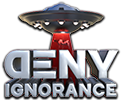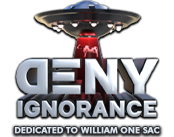
2 |
30 |
| JOINED: |
Jan 2024 |
| STATUS: |
OFFLINE
|
| POINTS: |
241 |

01-20-2024, 08:58 PM
This post was last modified 01-20-2024, 09:03 PM by Halfswede.
A lot of times, selective breeding is used to illustrate some of the process of evolution, but selective breeding actually punches a giant hole in the natural selection process of evolution theory.
Think about this: Natural selection depends on random mutations that favor some survival in certain environments, and this, supposedly after gobs of very random mutations and time, makes for new species.
But selective breeding by humans is done with very careful selection of mutations specifically to create certain traits or exaggerate others. It can cause change in a much shorter timeline. In fact we have some creatures used for genetic research like Drosophila melanogaster that have been bred for countless generations to drive change and show how natural selection "works".
But guess what? NOT ONE creature, even with countless generations of very specific selection, has been made into a NEW and distinct genus. No amount of selective breeding can make a cat into a dog. There are countless weird dogs, but every one is still a dog and inherently dog in nature. It doesn't start to become a bear or cat, or raccoon no matter how much it might kind of resemble something superficially. No amount of selective breeding will make a mouse into a rabbit. They even start out extremely similar. There are tons of examples where centuries of breeding weird variants and they all still fall into the same genera. Guppies are still guppies, goldfish with giant pop-eyes are still genetically goldfish, tomatoes are still tomatoes -- can't even squeak out an artificial eggplant. No amount of selective breeding can even make a fruit fly into a house fly.
These things aren't even big leaps, just the simplest tiniest changes and we can't even make bacteria, with millions of generations of selection, become a new genus of bacteria. It's still the same type of bacteria with some different traits. It's not now a multi-celled creature. Not once have we been able to even turn a single-celled rapidly reproducing genus into a multi-celled creature.
Given all of the very very focused efforts put into selective breeding and not one single micro-leap into a new genus and you want to believe that random mutations created all of this stuff, countless genera that exist from some single-celled bacteria. What can't even be duplicated in the smallest increment in a lab with focused effort is expected to happen randomly over and over and over to where there are all these unique genera.
It sounds like a joke to try and believe that.

2 |
361 |
| JOINED: |
Nov 2023 |
| STATUS: |
OFFLINE
|
| POINTS: |
2,734 |

I believe that selective breeding can produce modifications from the original template, thus the many different breeds of dog produced from the original wolf/dog matrix.
Like you, I think that great changes occur over huge times as a result of natural selection and spurious mutation. I think human "history" shows evidence of a gradual evolution from various species of primates to us, but also sudden mutations, for which the cause is unknown. It's one of my pet hobbies, and something that makes me nod at the ancient aliens hypothesis. The mutations could have occurred by natural means, such as directional radiation, or sudden viral changes or even incoming microbial influences.
We don't know our ancient history. We can only speculate based on various clues. I believe that homo sapiens got a kickstart in a short order of time that produced the current creatures; those creatures which continue to very slowly evolve, based upon natural selection.

28 |
377 |
| JOINED: |
Dec 2023 |
| STATUS: |
OFFLINE
|
| POINTS: |
2,755 |
(01-20-2024, 08:58 PM)Halfswede Wrote: A lot of times, selective breeding is used to illustrate some of the process of evolution, but selective breeding actually punches a giant hole in the natural selection process of evolution theory.
Think about this: Natural selection depends on random mutations that favor some survival in certain environments, and this, supposedly after gobs of very random mutations and time, makes for new species.
But selective breeding by humans is done with very careful selection of mutations specifically to create certain traits or exaggerate others. It can cause change in a much shorter timeline. In fact we have some creatures used for genetic research like Drosophila melanogaster that have been bred for countless generations to drive change and show how natural selection "works".
I think some clarification is needed here:
Firstly, the "selective breeding" we do IS from mutations. Take the Devon Rex cat ( https://en.wikipedia.org/wiki/Devon_Rex) as an example... a wavy coated kitten was born (mutation) into a group of normal kittens. The breeder loved the coat and the big ears and began breeding for those traits.
The goal isn't to create new species; it's to modify an existing species... but retain the species. If we'd wanted to breed a new species, we would have done that.
However, human presence HAS created new species... like the species of mosquito that lives underground in London train stations (no kidding) and is so distinct from its parent species (living aboveground) that they can't mate ( https://www.washingtonpost.com/news/spea...tinctions/)
Wheat has evolved into several species (not just varieties; species) https://en.wikipedia.org/wiki/Wheat
...and so on and so forth.

9 |
223 |
| JOINED: |
Nov 2023 |
| STATUS: |
OFFLINE
|
| POINTS: |
1,680 |

02-06-2024, 09:22 AM
This post was last modified 02-06-2024, 09:25 AM by Kurokage.
(01-20-2024, 08:58 PM)Halfswede Wrote: A lot of times, selective breeding is used to illustrate some of the process of evolution, but selective breeding actually punches a giant hole in the natural selection process of evolution theory.
Think about this: Natural selection depends on random mutations that favor some survival in certain environments, and this, supposedly after gobs of very random mutations and time, makes for new species.
But selective breeding by humans is done with very careful selection of mutations specifically to create certain traits or exaggerate others. It can cause change in a much shorter timeline. In fact we have some creatures used for genetic research like Drosophila melanogaster that have been bred for countless generations to drive change and show how natural selection "works".
But guess what? NOT ONE creature, even with countless generations of very specific selection, has been made into a NEW and distinct genus. No amount of selective breeding can make a cat into a dog. There are countless weird dogs, but every one is still a dog and inherently dog in nature. It doesn't start to become a bear or cat, or raccoon no matter how much it might kind of resemble something superficially. No amount of selective breeding will make a mouse into a rabbit. They even start out extremely similar. There are tons of examples where centuries of breeding weird variants and they all still fall into the same genera. Guppies are still guppies, goldfish with giant pop-eyes are still genetically goldfish, tomatoes are still tomatoes -- can't even squeak out an artificial eggplant. No amount of selective breeding can even make a fruit fly into a house fly.
These things aren't even big leaps, just the simplest tiniest changes and we can't even make bacteria, with millions of generations of selection, become a new genus of bacteria. It's still the same type of bacteria with some different traits. It's not now a multi-celled creature. Not once have we been able to even turn a single-celled rapidly reproducing genus into a multi-celled creature.
Given all of the very very focused efforts put into selective breeding and not one single micro-leap into a new genus and you want to believe that random mutations created all of this stuff, countless genera that exist from some single-celled bacteria. What can't even be duplicated in the smallest increment in a lab with focused effort is expected to happen randomly over and over and over to where there are all these unique genera.
It sounds like a joke to try and believe that.
It's a very simple video but I hope this helps you understand how a species evolves.
The Evolution of Whales
Quote:These first whales, such as Pakicetus, were typical land animals. They had long skulls and large teeth that could be used for eating meat. From the outside, they don’t look much like whales at all. However, their skulls — particularly in the inner ear region, which is surrounded by a bony wall — strongly resemble those of living whales and are unlike those of any other mammal. Often, seemingly minor features provide critical evidence to link animals that are highly specialized for their lifestyles (such as whales) with their less extreme-looking relatives.
"Denial is a common tactic that substitutes deliberate ignorance for thoughtful planning."
Charles Tremper

2 |
30 |
| JOINED: |
Jan 2024 |
| STATUS: |
OFFLINE
|
| POINTS: |
241 |

02-06-2024, 07:13 PM
This post was last modified 02-06-2024, 07:28 PM by Halfswede.
We have not created any new genera. That is the first delineator. Felis will always be Felis, and Nitrobacter will always be Nitrobacter. We should be able to at least replicate simple creation of new genera with focused mutation selection -- which we do by the millions with bacteria.

28 |
377 |
| JOINED: |
Dec 2023 |
| STATUS: |
OFFLINE
|
| POINTS: |
2,755 |
(02-06-2024, 07:13 PM)Halfswede Wrote: We have not created any new genera. That is the first delineator. Felis will always be Felis, and Nitrobacter will always be Nitrobacter. We should be able to at least replicate simple creation of new genera with focused mutation selection -- which we do by the millions with bacteria.
Genus and species are two different things.
The original claim is that we didn't see any new species from humans, and I listed the evidence to show that we have indeed created new species.
Genera's entirely different.
|















